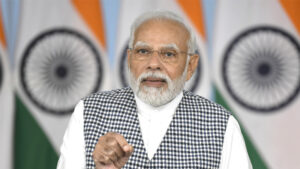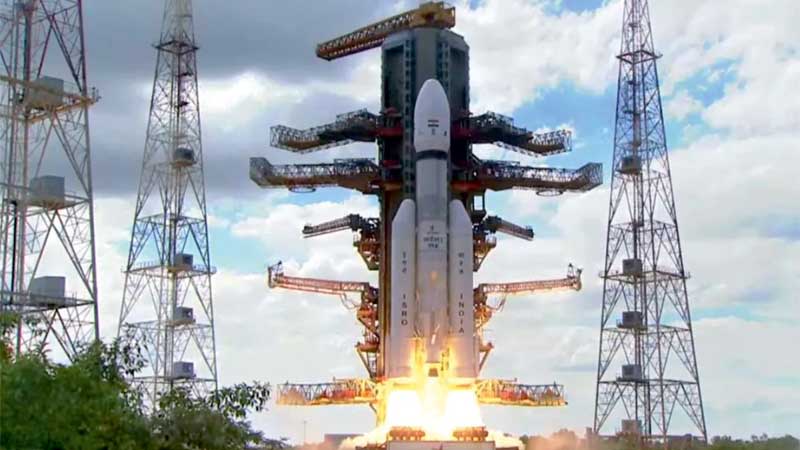The Prime Minister, Shri Narendra Modi has hailed the relentless dedication of India’s scientists on the launch of Chandrayaan-3.
Sharing a tweet by Indian Space Research Organisations, the Prime Minister tweeted; “Chandrayaan-3 scripts a new chapter in India’s space odyssey. It soars high, elevating the dreams and ambitions of every Indian. This momentous achievement is a testament to our scientists’ relentless dedication. I salute their spirit and ingenuity!”
The launch of Chandrayaan-3 took place on 14 July 2023, at 2:35 pm IST and lunar injection of 100 km circular polar orbit was completed successfully as part of phase one. The lander and rover are expected to land near the lunar south pole region on 23 August 2023.
Shri Narendra Modi has underlined the significance of Chandrayaan-3, India’s third lunar mission. Earlier, ahead of the launch Shri Narendra Modi said via twitter in the morning, the Chandrayaan-3 mission will carry the hopes and dreams of our nation He said,”14th July 2023 will always be etched in golden letters as far as India’s space sector is concerned. Chandrayaan-3, our third lunar mission, will embark on its journey. This remarkable mission will carry the hopes and dreams of our nation.

Chandrayaan-3 will be inserted into the Lunar Transfer Trajectory after the orbit raising maneuvers. Covering over 300,000 km, it will reach the Moon in the coming weeks. Scientific instruments onboard will study the Moon’s surface and enhance our knowledge.
Thanks to our scientists, India has a very rich history in the space sector. Chandrayaan-1 is considered to be a path breaker among global lunar missions as it confirmed the presence of water molecules on the moon. It featured in over 200 scientific publications around the world.
Till Chandrayaan-1, the moon was believed to be a bone-dry, geologically inactive and uninhabitable celestial body. Now, it is seen as a dynamic and geologically active body with the presence of water and sub-surface ice. Maybe in the future, it can be potentially inhabited!
Chandrayaan-2 was equally pathbreaking because data from the Orbiter associated with it detected the presence of chromium, manganese and sodium for the first time through remote sensing. This will also provide more insights into the moon’s magmatic evolution.
The key scientific outcomes from Chandrayaan 2 include the first ever global map for lunar sodium, enhancing knowledge on crater size distribution, unambiguous detection of lunar surface water ice with IIRS instrument and more. This Mission has featured in almost 50 publications.
Best wishes for Chandrayaan-3 mission! I urge you all to know more about this Mission and the strides we have made in space, science and innovation. It will make you all very proud.”


